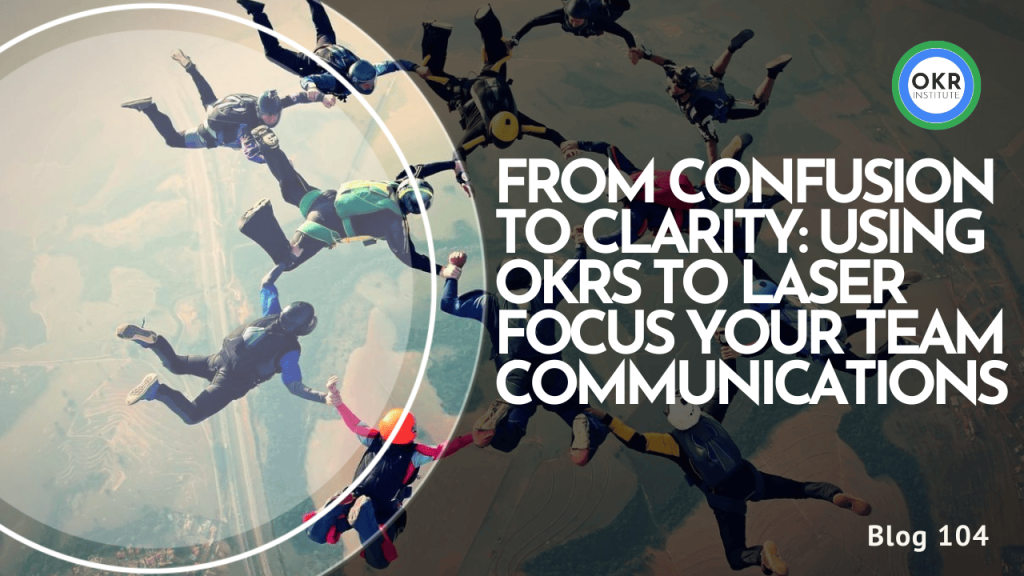Combining OKRs with Agile Methodologies: A Path to Enhanced Business Performance

Combining OKRs with Agile Methodologies: A Path to Enhanced Business Performance
In today’s dynamic business environment, companies constantly seek frameworks that enhance performance, drive alignment, and promote adaptability. Two powerful methodologies have emerged at the forefront of this quest: Objectives and Key Results (OKRs) and Agile. Both frameworks offer unique advantages, and when combined, they can create a synergy that propels organizations towards greater success. But the question remains: should we combine OKRs with other Agile methodologies? The answer is a resounding yes, and here’s why.
Understanding OKRs and Agile
Objectives and Key Results (OKRs) is a goal-setting framework that helps organizations articulate and achieve their strategic objectives through measurable outcomes. It fosters transparency, alignment, and focus across all levels of the organization.
Agile methodologies like Scrum, Kanban, and Lean focus on iterative development, continuous feedback, and adaptive planning. They are designed to enhance flexibility, collaboration, and efficiency, particularly in product development and project management.
The Synergy Between OKRs and Agile
Combining OKRs with Agile methodologies can unlock a multitude of benefits. Here are some of the key advantages:
- Enhanced Alignment and Focus:
- OKRs provide a clear strategic direction by setting ambitious, yet achievable objectives and measurable key results.
- Agile methodologies break down these objectives into manageable increments, ensuring that teams remain focused and aligned with the overall strategic goals.
- Increased Transparency and Accountability:
- OKRs promote transparency by making objectives and key results visible across the organization.
- Agile practices, such as daily stand-ups and sprint reviews, enhance accountability by informing everyone about progress and challenges.
- Greater Flexibility and Adaptability:
- OKRs are typically set on a quarterly basis, allowing organizations to pivot and adjust their goals as needed.
- Agile methodologies emphasize iterative progress and continuous improvement, enabling teams to adapt to changing requirements and environments swiftly.
- Improved Performance and Continuous Learning:
- The combination of OKRs and Agile fosters a culture of performance and learning. Teams are encouraged to set stretch goals and learn from successes and failures.
- Agile’s focus on retrospectives and feedback loops complements the OKR cycle by providing regular opportunities for reflection and adjustment.
Practical Steps to Integrate OKRs with Agile Methodologies
To successfully combine OKRs with Agile, organizations should follow a structured approach:
- Set Clear Objectives and Key Results:
- Begin by defining strategic objectives that align with your organization’s vision and mission.
- Align OKRs with Agile Iterations:
- Map out your key results to align with Agile sprints or iterations. This ensures that each sprint contributes towards achieving the key results.
- Use sprint planning sessions to identify tasks and stories to drive progress towards the key results.
- Foster Collaboration and Communication:
- Encourage cross-functional collaboration by integrating OKR discussions into Agile ceremonies such as sprint reviews and retrospectives.
- Promote open communication to ensure everyone understands how their work contributes to the overall objectives.
- Track Progress and Adapt:
- Use Agile tracking tools to monitor progress towards key results. Regularly review OKR progress during sprint reviews.
- Be prepared to adjust OKRs or Agile plans based on feedback and evolving business needs.
- Celebrate Success and Learn from Failures:
- Recognize and celebrate the achievement of key results to motivate teams.
- Conduct retrospectives to learn from any setbacks and apply those insights to future cycles.
Real-World Examples of Success
Many leading companies have successfully integrated OKRs with Agile methodologies to drive exceptional performance. For instance, Google uses OKRs to set ambitious goals, while its engineering teams employ Agile practices to achieve these goals iteratively. Similarly, Spotify combines OKRs with Scrum to maintain alignment and adaptability in its fast-paced development environment.
Conclusion
Combining OKRs with Agile methodologies can create a powerful synergy that enhances focus, alignment, and adaptability within organizations. By integrating these frameworks, businesses can achieve strategic objectives more effectively, foster a culture of continuous improvement, and navigate the complexities of today’s ever-changing market landscape. If you’re looking to elevate your organization’s performance, consider embracing this dynamic duo – the results might just exceed your expectations.
Are you ready to integrate OKRs with Agile methodologies in your organization? Reach out to our experienced OKR coaches today to learn how you can start driving transformative results. Let’s embark on this journey towards enhanced business performance together.
FAQs: Combining OKRs with Agile Methodologies
What are OKRs and Agile methodologies?
OKRs (Objectives and Key Results) is a goal-setting framework that helps organizations define and track objectives and their outcomes. Agile methodologies, such as Scrum, Kanban, and Lean, focus on iterative development, continuous feedback, and adaptive planning, primarily used in product development and project management.
Why should we combine OKRs with Agile methodologies?
Combining OKRs with Agile methodologies enhances alignment, focus, transparency, accountability, flexibility, and adaptability. It fosters a culture of performance and continuous learning, helping organizations achieve their strategic goals more effectively.
How do OKRs and Agile methodologies complement each other?
OKRs provide strategic direction and measurable outcomes, while Agile methodologies break down these objectives into manageable increments. Agile’s iterative process and continuous feedback loops ensure regular progress towards the key results defined by OKRs.
What are the practical steps to integrate OKRs with Agile methodologies?
The steps include setting clear objectives and key results, aligning OKRs with Agile iterations, fostering collaboration and communication, tracking progress and adapting plans, and celebrating success and learning from failures.
How can OKRs be aligned with Agile sprints or iterations?
During sprint planning sessions, key results can be mapped to align with Agile sprints or iterations. This ensures that each sprint directly contributes to achieving the key results, providing clear direction and focus for the team.
What tools can help in integrating OKRs with Agile practices?
Agile tracking tools like Jira, Trello, and Asana can monitor progress toward key results. These tools can also facilitate the integration of OKR discussions into Agile ceremonies such as sprint reviews and retrospectives.
Can OKRs and Agile methodologies be applied to non-software development teams?
OKRs and Agile methodologies can be applied across various departments and industries. Setting clear goals, iterative progress, continuous feedback, and adaptability are beneficial in any organizational context.
What are some common challenges when combining OKRs with Agile methodologies?
Common challenges include aligning short-term Agile sprints with longer-term OKRs, ensuring consistent team communication, and maintaining flexibility while staying focused on strategic objectives. Regular reviews and adjustments can help overcome these challenges.
How do companies like Google and Spotify use OKRs and Agile methodologies together?
Google uses OKRs to set ambitious goals across the organization, while Agile practices help their teams achieve these goals iteratively. Spotify combines OKRs with Scrum to maintain alignment and adaptability, ensuring that its development process supports strategic objectives.
What are the benefits of combining OKRs with Agile methodologies for organizational culture?
Combining OKRs with Agile methodologies fosters a culture of transparency, accountability, continuous improvement, and high performance. It encourages teams to set and achieve ambitious goals, learn from their experiences, and continuously adapt to changing environments.
How frequently should OKRs be reviewed in an Agile environment?
OKRs should be reviewed regularly, typically in alignment with Agile sprint cycles. This can be done during sprint reviews or dedicated OKR check-in meetings to ensure progress is on track and to make necessary adjustments based on feedback and changes in the business environment.
Is it possible to implement OKRs and Agile methodologies in a remote or distributed team?
Yes, implementing OKRs and Agile methodologies in a remote or distributed team is possible and can be highly effective. Using digital collaboration tools, maintaining clear communication, and regular virtual check-ins are key to successful implementation in a remote setting.
CEO of the OKR Institute
Related Courses
Recent Posts
Tags
#OKR
#OKR Coaching
#OKR Coach







